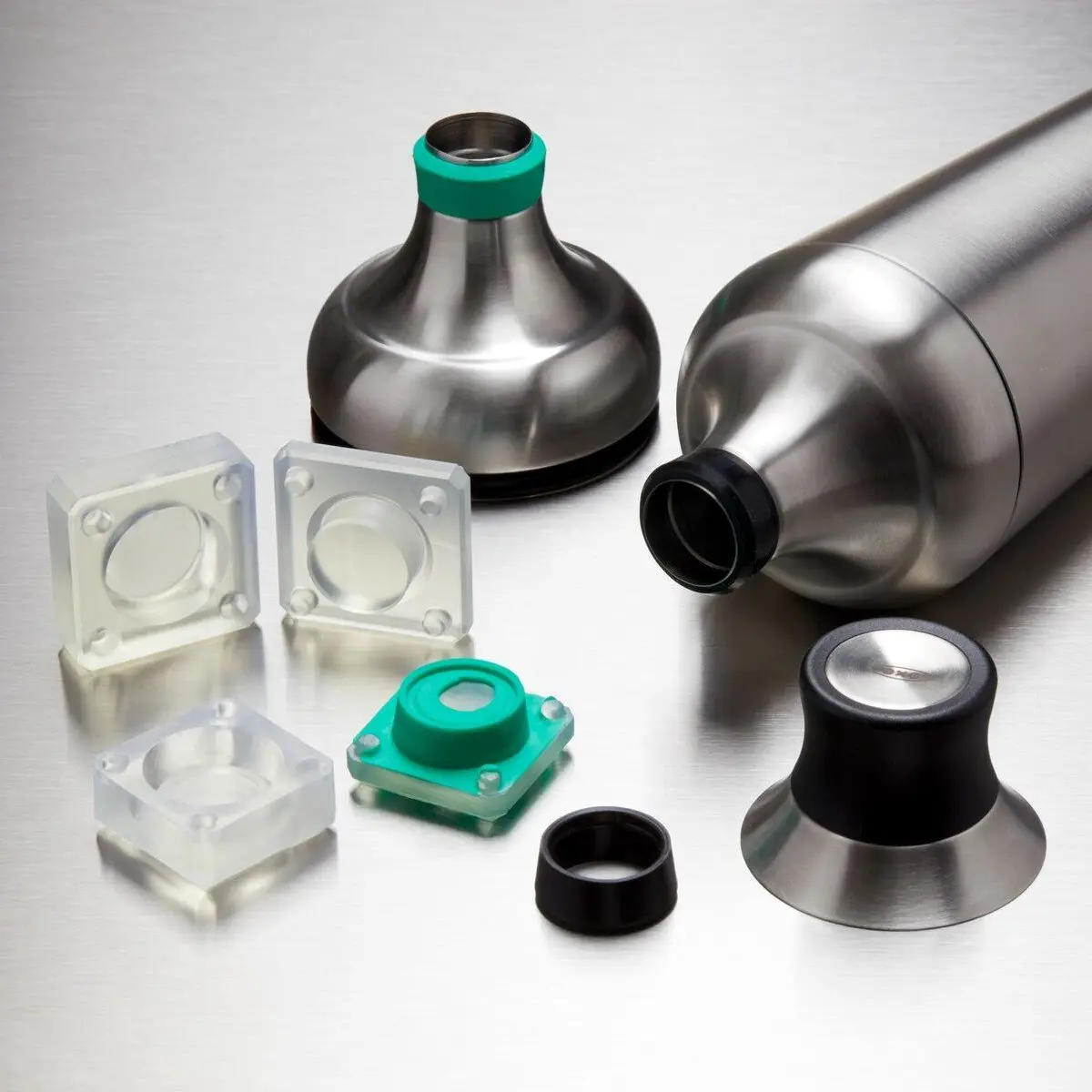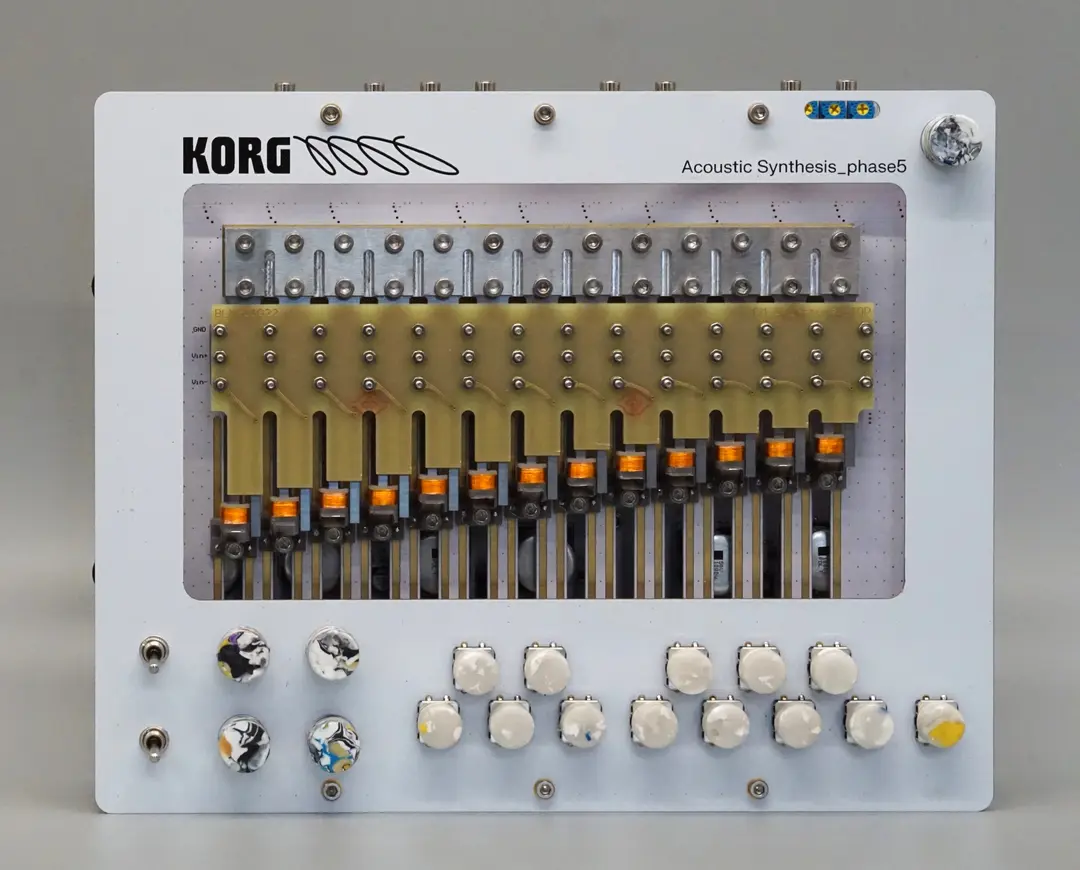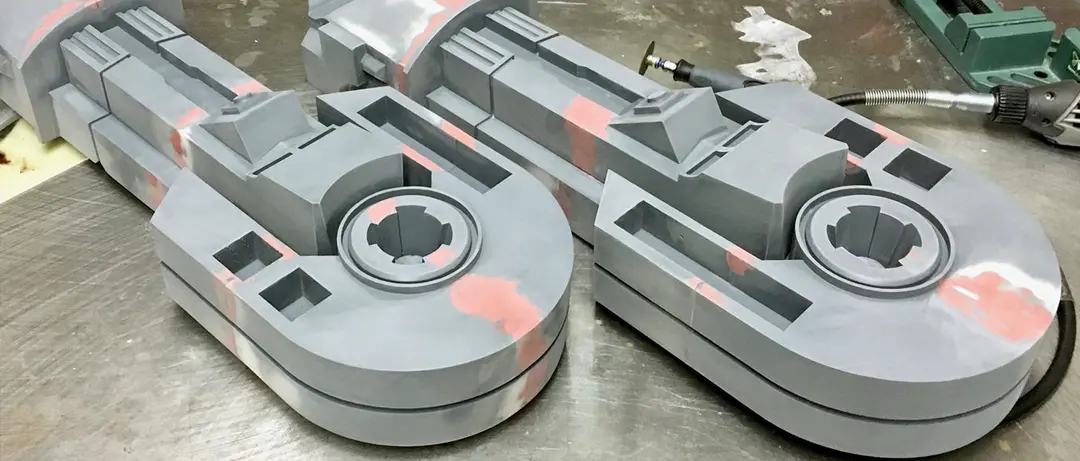How Monster City Studios Adapted Their Work to Support COVID-19 Relief Efforts
If you were to walk into Monster City Studios a year ago, you would have been greeted with a movie fan's dream: bite-sized super hero models, life-size figurines and everything in between. But if you stepped into one of their design studios today, you'd see a completely different scene: a bevy of 3D printers manufacturing masks, face shields and other personal protective equipment (PPE) designed to help stop the spread of COVID-19.
The story of how design and fabrication company Monster City Studios quickly pivoted from props to PPE in the matter of weeks is a story about the rapidly evolving role of 3D printing in the face of COVID and the ingenuity of companies to repurpose their equipment to help in that fight. James Powell, founder of Monster City studios, and Jorge Perez, CNC programmer and operator at the company, switched their focus to making face shields and reusable silicone face masks. In March, they started Mask and Shield, dedicating their efforts to producing PPE.
Though we are seeing reopenings in certain industries, COVID-19 remains a very real threat. Healthcare workers still need PPE — a Washington Post-Ipsos poll found that as recently as May, healthcare workers experienced equipment shortages. That’s where Monster City Studios comes in. Had Monster City Studios not been producing PPE, they would have been deemed a nonessential business. But by adapting their business model, the Fresno, California-based company was able to remain afloat during the ongoing pandemic and help frontline healthcare workers. Read on to learn more about:
-
Monster City Studios’s history
-
Why they launched their COVID-19 response Mask and Shield
What is Monster City Studios?
Serving some of the largest theme parks across the world, Monster City Studios also works on plenty of film and television projects with foam and fiberglass. They’ve also donework for interactive pop-up events for brands like Nike and Southwest Airlines. With a wide range of equipment, Monster City Studios is able to adapt to different projects. Additionally, they do small scale thermoforming and incorporate Formlabs’ printers--a Form 2 and a Form 3--into their work. “We’ve only had them for less than a year...But we've certainly been able to integrate them in pretty much everything we do here at Monster City. They’ve helped out from prototyping, making prototype parts, all the way to making molds to make actual pieces,” Powell said. “Formlabs has been a huge help to us.”
The Two 4 Axis Frog Mills is a part of Monster City Studios' equipment portfolio
Monster City Studios has an expansive portfolio, having worked with Marvel, DC Comics, and a nonprofit called Magic Wheelchair. “Any of you ZBrush users out there may know that that product is used for all kinds of entertainment work, as well as medical and dental,” Powell said. One of their most well-known pieces is Harley Quinn, made out of EPS foam and polyurea. It was featured at Comic Con a few years ago and highlighted in the 100th issue black and white Batman collection.
For large scale structures like the Hulk, Monster City Studios incorporates robotic milling technologies to mill large chunks of foam, instead of glueing parts together like they would have done with CNC milling. But for detailed parts like the tassels, they turn to 3D printing, making molds of parts and making the final parts in fiberglass, gluing those to the large scale fiberglass pieces.
Mask and Shield
Monster City Studios has plenty of experience with large scale projects for the entertainment industry. But when the business was deemed nonessential, they pivoted to making PPE, addressing an entirely new industry.
To make face shields, they used mold tools from Formlabs. They turned those molds into a tool they hooked up to a pneumatic machine to close and open the mold, then they injected platinum silicone rubber in the molds. They prototyped with a material called Precision Board by Coastal Enterprises, a company based in Orange, California. The High Density Urethane (HDU) “Precision Board” stands up to thousands of PETG pulls at 500 degrees Fahrenheit. The material is almost like a plastic.
To respond to the COVID-19 pandemic, Monster City Studios turned to making PPE like the face shields pitctured above
They’ve made a tool and drilled holes in the tool to enable suction from the vacuum to suck down the heated plastic when it comes on top of the mold. “We have now, using these exact tools, pulled thousands of pulls off of this material...It’s been pretty amazing,” Powell said. “It’s literally made to do 50 pulls, if that. And we have pulled thousands upon thousands of face shields off this material.” The foam material they used worked better than the material specifically designed for production tooling. The tools showed no signs of degradation. “You can use a relatively inexpensive material and you can make thousands of pieces off of it,” he said. “This is a way that we were able to take what we use generally for theming and for the amusement park business and turn it into something that is a protective or a piece of PPE. With our particular shields that we’re making, we actually made the shields so they cover the forehead area. That was noted to be a problem with a lot of the standard shields that were out there.” The KUKA Robot, normally used for sculptures, is now used for trimming face shields because of the compound curves in the face shields.
Formlabs printers were used not only to print prototypes, but also to make production molds. “I’m very interested in printing molds with the tool...if you knew any injection molding, the metal injection molding tools are extremely expensive,” Powell said. Soft metal costs hover around $30,000 while tooling metal costs can go up to $60,000. “We don’t have the time nor the money to be able to spend that much on a tool. So we worked in conjunction with Formlabs and we were able to come up with this tool that could be printed for a reasonable cost and then used as a tool for us to inject silicone and rubber into and it worked just like an aluminum or a steel tool...we’ve pulled hundreds of masks from these parts and we have about 25 molds. We haven’t seen any degradation because we’re pulling silicone.” Formlabs helped streamline the production process. “It’s been really nice to be able to design a product, go into ZBrush, do a negative boolean and subtract that product from a mold, create a proper mold, and then use that mold as a...poor man’s injection molding,” Powell said. “I think that’s something we want to investigate more because it enables a lot of custom work to be done that would have to be injection molded otherwise.” The Form 2 and Form 3 were used to help prototype the entire production run.

Silicone Part Production With 3D Printed Tools
Download this report for a step by step guide on 3D printed tooling for silicone part production, with mold design best practices and customer case studies.
Conclusion
Faced with challenging circumstances, Monster City Studios was able to innovate their way into producing PPE in a seamless fashion. And Formlabs printers played an integral role throughout the entire production process. The printers functioned as tools to make more tools that produced final parts.


